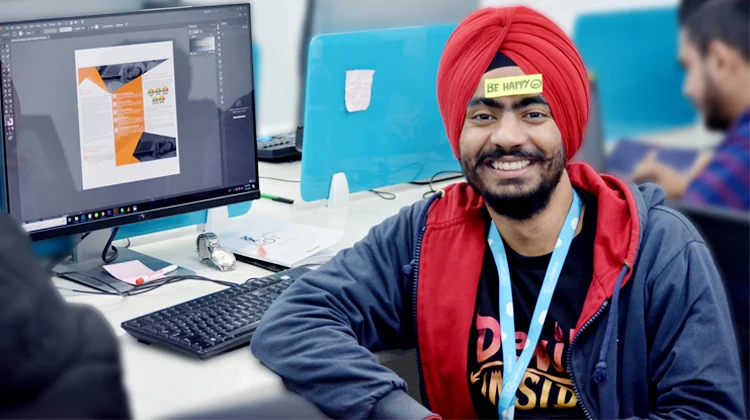
Have you been wondering what it takes to get started in graphic design as a career? Like many others, creative people are having to rethink career options after the recent tumultuous times experienced in the job market. Even though you will experience a lot of competition out there, there are also a lot more opportunities available.
There is a wide variety of routes to follow to help you pursue a successful career in graphic design. While there is no obvious path to follow, it’s all about determination, seizing opportunities when they present themselves, and tackling each project with passion and vigour.
If you would like to view some of the hottest design jobs available right now, get in touch with recruitment agencies marketing or visit our UK Design Jobs Board which is constantly being updated with the latest and best design vacancies. And while you’re there, make sure that your portfolio is brought up to date by visiting our alternative portfolio sites as well.
Tips to Ensure a Successful Career
1. Brush up Your Software Skills
Most formal study programmes in Academic Courses do not place enough emphasis on developing specific software skills for good reason. These courses concentrate more on developing a broad understanding of timeless principles and concepts and developing problem-solving skills. Software packages on the other hand can change constantly, even on a month-to-month basis. Even if they wanted to, academic institutions will find it very difficult to keep up with all the new software packages constantly being developed. Whichever path you choose to further educate yourself, the important thing is to know how to put the skills you have learned into practice. Collect fully completed work to place into your portfolio as something concrete to present and discuss during an interview.
2. Pursue Formal Study
While there are some graphic designers who have made a successful career without formal education, a university degree is always the most reliable and safest route to enter the industry. Formal study is not only important when trying to get a job but being thoroughly grounded in basic design theory and the practice that goes along with it will ensure that you will be able to do a good job.
3. Do Interim Freelancing
After graduating from formal study and up to speed with the required relevant software, you are ready to start entering the job market. But there is no reason to sit around while waiting for responses to your applications. You can start freelancing by taking on projects that will utilise everything you have learned so far. This is a great opportunity to translate the theoretical skills you have acquired into something more meaningful and practical. This will also give you something more to discuss at job interviews while at the same time bringing in some money until you can earn a solid income.
4. Pursue an Internship
Getting a placement with a known design studio or in-house department can provide invaluable experience that you will be able to draw on throughout your future design career. The experience will help you understand things like how to design organisations are run and get a better understanding of workload and client requests.
5. Offer to Work for Charities
Offering your design skills to charities in your local community is another way of getting noticed, starting a network base, and adding solid work experience to your portfolio. Of course, working for a good cause, especially if it is something close to your heart, is a reward in itself. In addition, charity projects could potentially lead to real paid work in nonprofit as well as for-profit sectors.
6. Find and Nurture a Network of Peers
Instead of viewing your peers as competition, in the design world, it is better to rather think of them as collaborators and supporters. In this industry, it really pays to nurture an active network of peers. If someone you are working with passes on a project to you because of budget shortages or too busy a schedule, rather look at how it might be just the right fit for you. It can even be a great addition to your portfolio that can eventually open the doors to new ventures and bigger opportunities.



